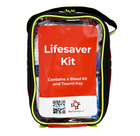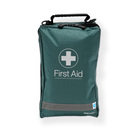Different types of trauma
Unlock This Video Now for FREE
This video is normally available to paying customers.
You may unlock this video for FREE. Enter your email address for instant access AND to receive ongoing updates and special discounts related to this topic.
Treating Injuries on a Boat: Essential First Aid Techniques
Introduction to Treating Boat Injuries
Boating activities can lead to various injuries, ranging from minor cuts to severe trauma. Here, we discuss essential first aid techniques for treating injuries encountered on boats.
Types of Boat Injuries
Catastrophic Bleeds
For severe bleeds, such as limb injuries, immediate action is crucial:
- Tourniquet Application: Apply above the injury site, avoiding joints, to halt bleeding rapidly.
- Haemostatic Agents: Use for deep lacerations or wounds where direct pressure may not suffice.
- Trauma Dressings: Pack wounds with haemostatic agents and apply trauma dressings for effective wound management.
Puncture Wounds and Foreign Objects
Handle wounds with embedded objects cautiously:
- Do Not Remove Object: Leave in place to avoid further damage; secure with haemostatic agents and bandaging.
Chest Injuries
Recognise and treat injuries involving the lungs:
- Vented Chest Seals: Use to manage wounds causing air leaks from the lungs; monitor closely for pneumothorax.
Head Injuries
Address head wounds effectively:
- Wound Cloth and Bandages: Apply to control bleeding and protect the injury site.
Amputations
Handle traumatic amputations with immediate action:
- Assess Severity: Apply direct pressure or tourniquets as necessary to control bleeding.
Emergency Response and Preparation
Be prepared for emergencies:
- Contact Emergency Services: Dial emergency numbers or contact the Coast Guard for guidance and assistance.
- Preparation: Equip your boat with comprehensive first aid kits and bleed kits before setting sail.
Conclusion
Understanding these first aid techniques and having the appropriate equipment on board can significantly improve response and outcomes in the event of boating injuries.
For more information on haemostatic agents, tourniquets, or bleed kits, please contact us.





_-Trauma_20x30_CE.jpg)
_-Trauma_8x20_CE.jpg)
